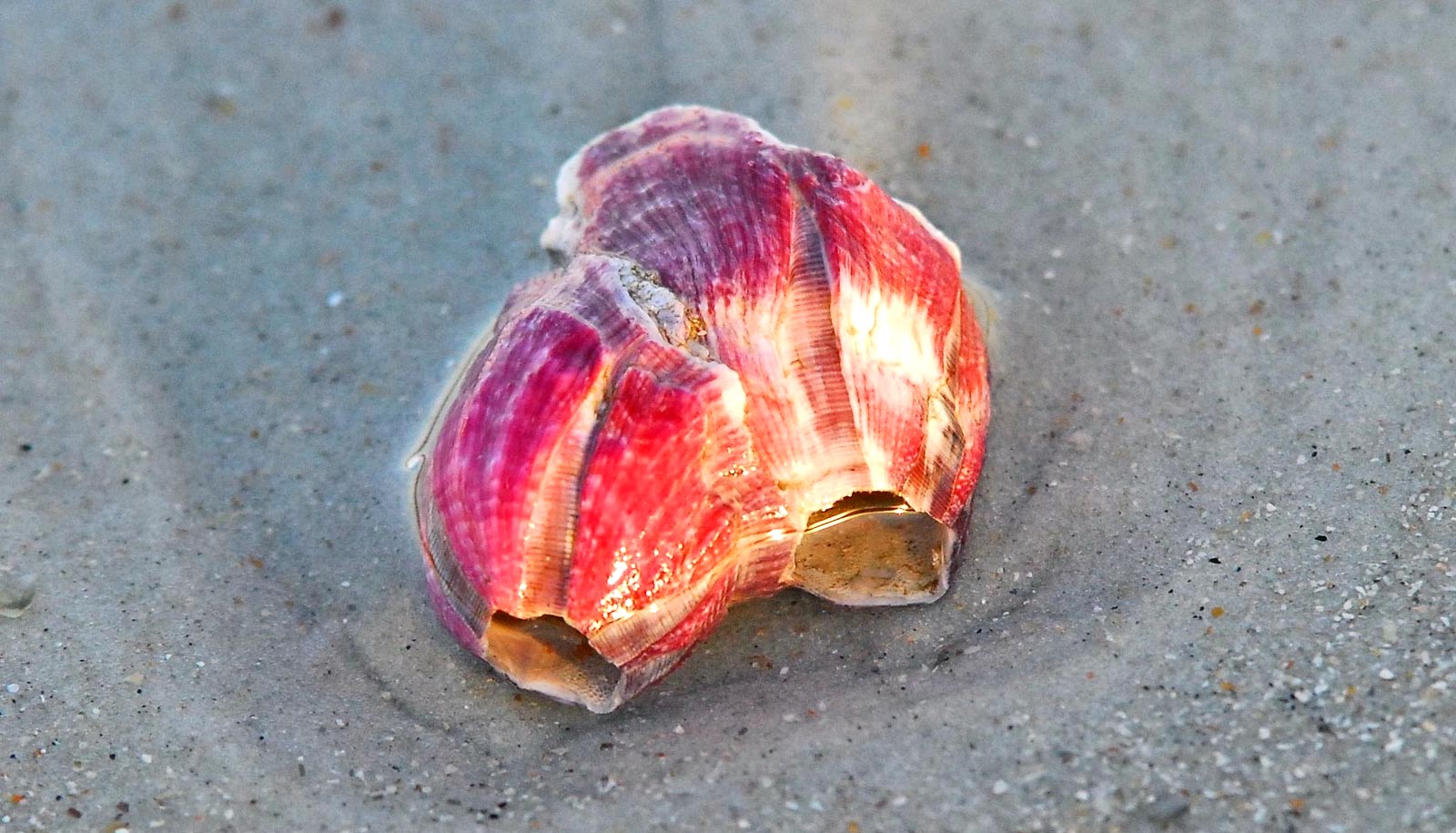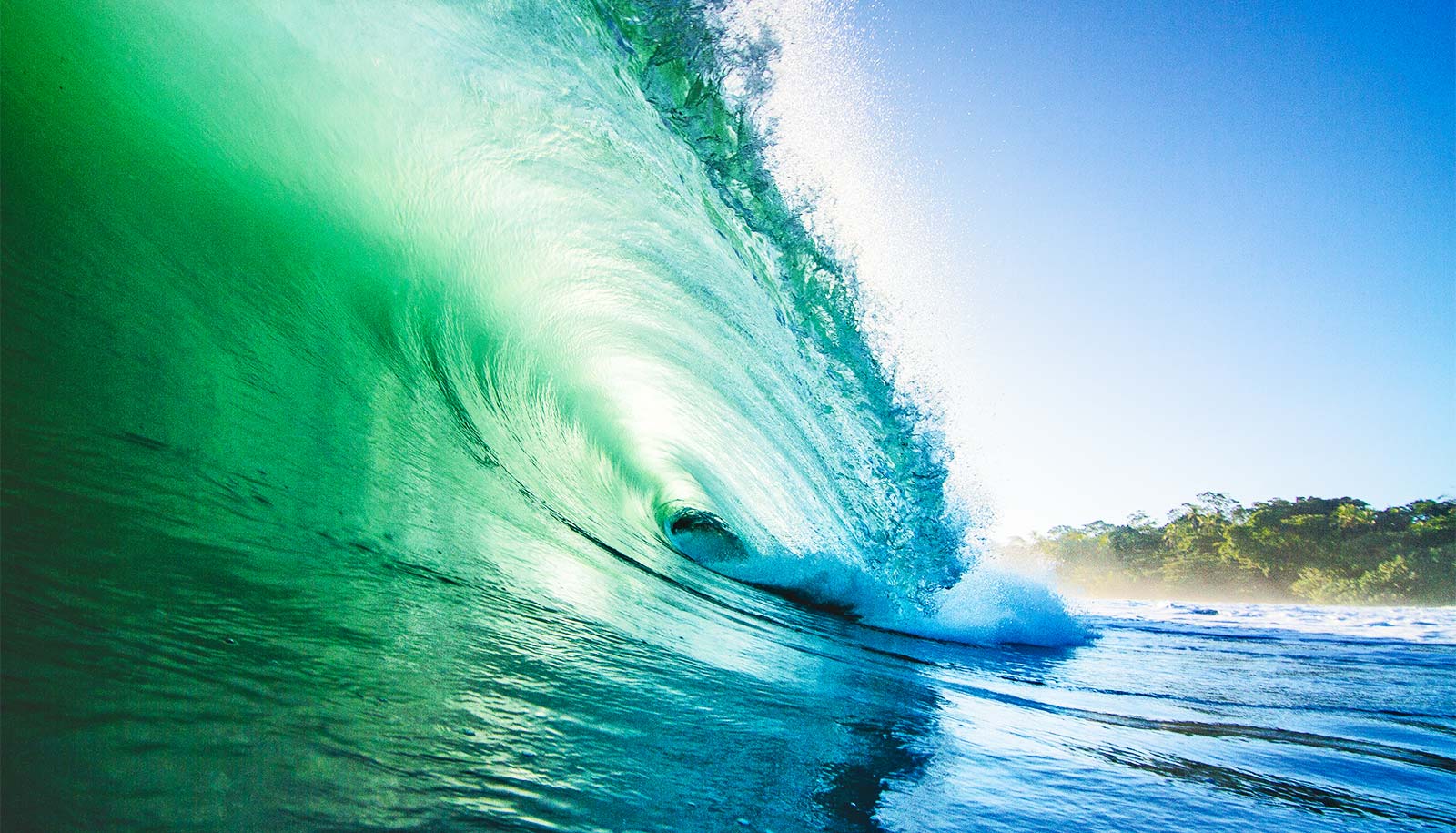Marine creatures can easily ingest plastic nanoparticles—tiny bits of plastic less than 1 micrometer in size—and they can accumulate over time, research shows. The plastic bits could potentially threaten food safety and pose health risks.
Ocean plastic pollution is a huge and growing global problem, researchers say. Estimates say the oceans may already contain over 150 million tons of plastic, and about eight million tons of plastic will end up in the ocean each year.
Further, plastics don’t degrade easily. In the marine environment, the sun, waves, wind, and microbial action usually break them down into smaller pieces. Filter-feeding marine organisms like barnacles, tube worms, and sea-squirts may then ingest these micro- and nanoplastic particles.
Using the acorn barnacle Amphibalanus amphitrite as a model organism, researchers demonstrated for the first time that nanoplastics consumed during the larval stage are retained and accumulated inside the barnacle larvae until they reach adulthood.
“We opted to study acorn barnacles as their short life cycle and transparent bodies made it easy to track and visualize the movement of nanoplastics in their bodies within a short span of time,” says Samarth Bhargava, a PhD student in the chemistry department at the National University of Singapore Faculty of Science, and first author of the paper in ACS Sustainable Chemistry & Engineering.
“Barnacles can be found in all of the world’s oceans. This accumulation of nanoplastics within the barnacles is of concern. Further work is needed to better understand how they may contribute to longer term effects on marine ecosystems,” says Serena Teo, senior research fellow from the Tropical Marine Science Institute, who co-supervised the research.
Researchers incubated the barnacle larvae in solutions of their regular feed coupled with plastics that are about 200 nanometers in size with green fluorescent tags. They exposed the larvae to two different treatments: “acute” and “chronic.”
Under the “acute” treatment, the barnacle larvae spent three hours in a solution that contained 25 times more nanoplastic than current estimates of what is present in the oceans. Under the “chronic” treatment, the barnacle larvae spent up to four days in exposure to a solution containing low concentrations of nanoplastic.
The researchers then filtered the larvae from the solution and examined them under the microscope. The distribution and movement of the nanoplastics were monitored by examining the fluorescence from the particles present within the larvae over time.
Watch: Plastic trash makes diseases worse for corals
“Our results showed that after exposing the barnacle larvae to nanoplastics in both treatments, the larvae had not only ingested the plastic particles, but the tiny particles were found to be distributed throughout the bodies of the larvae,” says second author Serina Lee from the Tropical Marine Science Institute.
Even though the barnacles’ natural waste removal pathways of moulting and excretion resulted in some removal of the nanoplastics, there was still a continued presence of nanoplastics inside the barnacles throughout their growth until they reached adulthood.
Fluorescent dye finds ‘lost’ ocean microplastics
“Barnacles may be at the lower levels of the food chain, but what they consume will be transferred to the organisms that eat them. In addition, plastics are capable of absorbing pollutants and chemicals from the water. These toxins may be transferred to the organisms if the particles of plastics are consumed, and can cause further damage to marine ecosystems and human health,” says marine biologist Neo Mei Lin from the Tropical Marine Science Institute.
The Marine Science Research and Development Programme of the National Research Foundation Singapore funded the work.
Source: National University of Singapore



